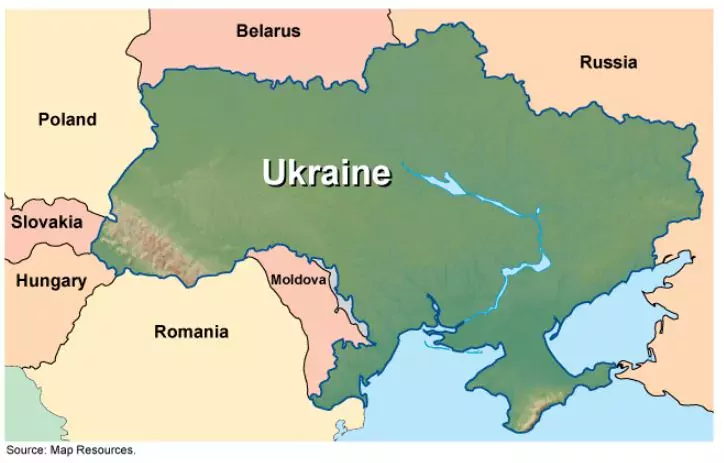Ukraine Aid is Important, But So is Oversight of This Funding and Assistance
Russia’s invasion of Ukraine has caused a devastating loss of life, widespread humanitarian crisis, and other global effects. As of April, Congress has appropriated more than $174 billion to assist Ukraine. This includes funding to purchase missiles, ammunition, and combat vehicles for Ukraine. It also includes economic and humanitarian assistance to help those in Ukraine and neighboring countries affected by the invasion.
While this assistance is vital, so is oversight of how funding and other assistance are being tracked and used.
Today’s WatchBlog post looks at some of our work so far on Ukraine oversight. You can see all our recent public reports by visiting our new Ukraine oversight webpage.
Image

Ukraine assistance and our work
Assistance to Ukraine has come in many forms. For example, the economic and humanitarian assistance activities have included training first responders and hospital clinicians on the use of protective suits during chemical hazard events (photo below, top left). And it included deploying a mobile pharmacy (top right) and training for anti-corruption detectives on how to gather intelligence from items discarded by suspects (bottom).
Examples of Non-Security Assistance Provided to Ukraine
Image

However, there are a number of ways in which federal agencies could improve oversight. This includes bolstering oversight requirements, improving monitoring of weapons’ use, and better tracking how funds are being used in Ukraine. For example:
Tracking equipment. Since February 2022, the U.S. has provided an unprecedented amount of equipment to Ukraine. The Department of Defense (DOD) has been delivering this equipment rapidly, sometimes taking days to complete deliveries that typically take weeks. But DOD doesn't have clear guidance for tracking equipment deliveries, and its delivery data may not be accurate. Also, DOD modified its monitoring approach during the ongoing conflict but has not assessed whether it sufficiently guards against equipment loss or misuse.
Examples of Weapons Delivered to Ukraine
Image

Tracking funding. The State Department doesn't have a systematic, comprehensive approach to specifically track funding that federal agencies have provided for economic and humanitarian assistance to Ukraine. For example, State provided assistance to other countries affected by the crisis but didn't consistently include this assistance when tracking Ukraine-related funding.
Effective resource use. DOD's European Defense Initiative helps boost the military readiness of European allies and deter Russian aggression. Since 2015, the U.S. has spent $35 billion through this initiative on activities like supporting American troop deployments in Europe. Historically, the military services have used their own criteria to decide which activities are funded under the initiative. DOD has recently issued guidance to standardize the services' budget requests and improve accountability for these funds. But DOD has not established performance goals and measures to determine if the resources are being used effectively.
Asset valuation. Presidential Drawdown Authority allows the President to provide defense items such as ammunition and missiles from DOD's inventories to respond to foreign crises. In 2023, DOD notified Congress that it had misvalued items given to Ukraine under this authority in FY 2022 and FY 2023 by about $6.2 billion. The law that includes this authority doesn't clearly define "value" as it relates to the authority. Also, DOD doesn't have valuation guidance specific to this authority, so it can't be assured that it will value these items accurately.
Managing fraud risks. The U.S. Agency for International Development (USAID) has standard processes to manage risks to its delivery of assistance in countries worldwide. But in countries affected by violent conflict, such as Ukraine, dangerous conditions can limit USAID's ability to directly oversee its assistance—increasing the risk of fraud or corruption. Despite this, USAID does not comprehensively assess and document relevant fraud risks, including for Ukraine.
Supporting Ukraine’s government. As of May, USAID had obligated $22.9 billion for direct budget support for Ukraine’s government, largely to reimburse the government for eligible expenses, such as salaries for teachers, civil servants, and healthcare workers. USAID has used a layered approach to oversee this funding, with different entities responsible for providing different types of oversight—such as identifying gaps in Ukrainian government processes and conducting financial audits. However, some of these entities’ work has limitations, which affect the level of accountability their oversight provides.
Supporting humanitarian and development needs. State and USAID had 111 implementing partners carrying out humanitarian and development assistance in Ukraine, as of September 30, 2023. The majority of these partners were U.S.-based nongovernmental organizations. When selecting these partners, State and USAID followed their own selection requirements, but some of these requirements could be bolstered to strengthen the processes for screening potential partners.
Recovery assistance. Applying lessons learned from past conflicts could enhance the effectiveness of U.S. recovery assistance to Ukraine. Such lessons include (1) maintaining a clear strategy and financial plan, (2) ensuring political and civil society support, (3) promoting effective coordination, and (4) establishing and utilizing accountability mechanisms.
Donor coordination: At least 30 countries have pledged over $148 billion in security assistance to Ukraine since Russia’s invasion in 2022, which the U.S. has helped to coordinate. This includes $2 billion worth of defense items of U.S. origin—such as missiles and ammunition—that foreign donors requested to transfer to Ukraine. State approves these transfers and DOD is required to monitor the items. However, State hasn’t consistently shared approval information with DOD and neither DOD nor State verify the delivery of these transfers, which hampers monitoring.
- GAO’s fact-based, nonpartisan information helps Congress and federal agencies improve government. The WatchBlog lets us contextualize GAO’s work a little more for the public. Check out more of our posts at GAO.gov/blog.





